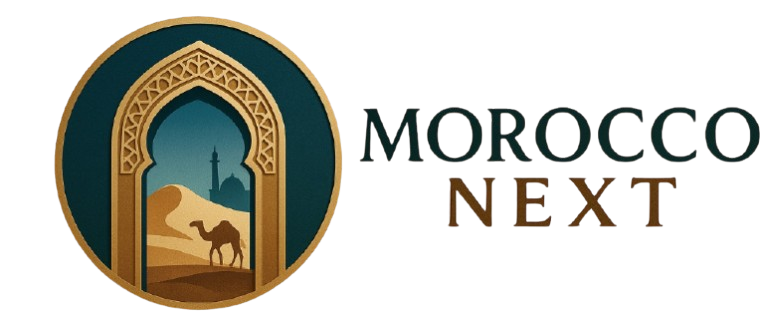Toubkal Morocco: A Comprehensive Guide to Trekking the Highest Peak in North Africa
Toubkal Morocco: A Comprehensive Guide to Trekking the Highest Peak in North Africa

Toubkal, located in the High Atlas Mountains of Morocco, is the highest peak in North Africa, standing at 4,167 meters (13,671 feet). This towering mountain has become a popular destination for trekkers and adventurers seeking the challenge of reaching its summit.
Whether you’re an experienced hiker or a beginner looking for a new adventure, trekking Toubkal offers an unparalleled experience of Morocco’s natural beauty and diverse landscapes.
In this guide, we’ll explore everything you need to know about trekking Toubkal, including the best routes, preparation tips, what to expect during the journey, and why this adventure is a must-do when visiting Morocco.
1. Why Trekking Toubkal is a Must-Do in Morocco
Toubkal is not only the tallest mountain in Morocco but also a symbol of natural grandeur that draws adventurers from around the world. Its proximity to Marrakech makes it a convenient escape from the city’s bustling markets and crowded streets, offering visitors a chance to immerse themselves in the tranquility of the Atlas Mountains.
Reaching the summit of Toubkal gives trekkers panoramic views of rugged landscapes, dramatic valleys, and Berber villages nestled into the hillsides. The mountain is accessible year-round, but the best time to trek Toubkal is between April and October when the weather is most favorable.
2. Popular Trekking Routes to Toubkal
There are various routes to reach the summit of Toubkal, each offering different levels of difficulty and scenic experiences. The most popular route is the Toubkal Ascent, a two-day trek that starts in the village of Imlil, located about 67 kilometers from Marrakech. Here’s a breakdown of the most common trekking routes:
- The Standard Route (Imlil to Toubkal Summit): This is the most popular and straightforward route. The trek begins in Imlil, where you’ll pass through Aroumd and continue up the valley to the basecamp known as the Toubkal Refuge. The ascent from basecamp to the summit typically takes 4 to 5 hours, with trekkers returning to Imlil by the second day.
- The Imlil to Tizi n’Ouagane Circuit: For those who want a longer, more immersive experience, this four-day circuit takes trekkers on a loop around the Toubkal region. You’ll pass through scenic valleys like Tizi Mzik, offering stunning views of the Atlas Mountains.
- The Toubkal Circuit: For experienced trekkers looking for a challenge, the Toubkal Circuit offers a seven-day adventure that covers the entire Toubkal National Park, including the summit. This route takes you through remote Berber villages and across multiple high-altitude passes.
3. Preparing for Your Toubkal Trek
While the standard Toubkal ascent is achievable for most people in good physical condition, it’s essential to prepare thoroughly for the trek. Here are a few tips to ensure a successful ascent:
- Physical Fitness: You don’t need to be an expert mountaineer to trek Toubkal, but a moderate level of fitness is required. Spend time building your stamina with long walks or hikes before your trip.
- Packing the Essentials: Key items to bring include a good pair of hiking boots, warm clothing for the summit (temperatures can drop below freezing), a high-quality sleeping bag, and plenty of water. Also, consider hiring a local guide for safety, especially if trekking in the winter months when the trails can be covered in snow.
- Altitude Sickness: The altitude of Toubkal can affect some trekkers, causing headaches, nausea, and dizziness. It’s important to acclimatize by spending a day or two in Imlil before starting your trek. Drink plenty of water, and avoid rushing to the summit.
4. Best Time to Trek Toubkal
While Toubkal can be climbed year-round, the ideal months for trekking are between April and October. During this period, the weather is mild, and the trails are clear of snow. If you choose to trek during the winter months, it’s recommended to bring crampons and ice axes, as the snow-covered trails can be slippery and challenging.
5. The Cultural Experience
Trekking in Toubkal isn’t just about the adventure—it’s also a cultural experience. The mountain is located in the Toubkal National Park, home to numerous Berber villages. As you trek through the region, you’ll have the chance to meet the Berber people, known for their hospitality and traditional way of life. Staying in local guesthouses or gîtes offers a unique opportunity to learn about Berber culture and enjoy traditional Moroccan cuisine.
6. External Resources for Planning Your Trek
For further detailed information and safety guidelines, the following external links provide valuable resources:
- Moroccan National Tourist Office – Official guide for travel in Morocco, including trekking tips.
- Atlas and Sahara Tours – Specialized in arranging guided treks to Toubkal and other areas of the Atlas Mountains.
7. Internal Links for More Information
For more insights into trekking in Morocco and exploring other adventure options, check out Morocco Next, a resource hub offering comprehensive guides on travel and tours in Morocco.
8. Conclusion
Trekking Toubkal, Morocco’s highest peak, is an adventure that combines physical challenge, breathtaking scenery, and rich cultural experiences.
Whether you’re taking the standard two-day route or opting for a longer circuit, the journey to the summit of Toubkal offers an unforgettable experience in one of Morocco’s most iconic landscapes.
By preparing adequately, choosing the right route, and respecting the natural environment, you can ensure that your trek to Toubkal is a rewarding and safe adventure.
With the combination of stunning mountain views, the charm of Berber villages, and the thrill of reaching North Africa’s highest peak, Toubkal Morocco is a destination every trekking enthusiast should add to their bucket list
All Categories
- No categories


